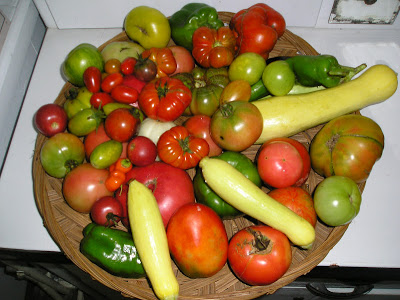by Carol Kagan, Master Gardener
 |
| Detail from a miniature container garden (Photo: J Kaufman) |
“Look closely. The beautiful may be small,” said Master Gardener Juanita Kaufman, quoting Immanuel Kant.
 |
| The crowd found Juanita to be enthusiastic and a good presenter. |
Fifty four people came to the February 1 workshop “Fairy Gardening,” to look at and learn how to create small gardens. Brenda Hollar, a Master gardener from Washington County, Md., came because she wants to make one.
Kaufman’s enthusiasm and experience in making fairy gardens were evident. “I’m not actually gardening. I’m just having fun,” she said. Her displays included several of her container gardens, her handmade houses, and the outdoor accessories she brings in for the winter.
 |
| Kaufman made these out of a coffee can (L) & bleach bottle (R) |
Although called fairy gardens, these miniature displays can also feature gnomes or, let your imagination go to small animals or different people. "You determine what your world looks like," Kaufman said.
 |
| Examples of accessories that can be used |
Miniature gardening also includes bonsai (bone’-sigh) and railroad gardening. A Master Gardener workshop on bonsai is scheduled for February 22. The railroad gardening this year will be held off-site at a railroad garden and is planned for early August.
 |
| An outdoor garden (Photo: J Kaufman) |
These gardens can be in a container or in ground as part of an outdoor area. Containers can be moved outside during the growing season and can enhance a patio, porch or any area of a garden.
Kathy Rogers, Waynesboro, likes the idea of the small gardens. She plans to make a container garden and “start small.” Andy Junker, Chambersburg, said her active life includes a lot of travel and an indoor container wouldn’t work. She may try to incorporate one in her outdoor landscape.
Kaufman went through various steps to create a garden. She noted her experience, including mistakes made and corrected, as she went from choosing a site (and where not to put one), a theme and the scale (look before you buy). Site preparation includes thinking about access to utilities and the garden itself (small enough to be ‘reachable”).
Linda Shuey came from Carlisle with her husband. She liked the “do’s and don’ts” Kaufman included. “And my husband seems to be fascinated, too,” she added.
“Kids that never grew up and got out of the doll house love these,” Kaufman said, noting that “there is a sense of magic and whimsy.”
 |
| A very small fairy garden |
Seeing these fairy gardens as a wonderful way to create a childhood experience, Marlene Schlusser, Carlisle, has already tried two. “I know I need a lot of help,” she said, noting that she likes all the miniature items. “Scale may be” a problem she has to consider.
“Children love these things — they’re drawn to them like magnets,” Kaufman said. Nancy Pollard, University of Illinois Extension horticulture educator, says creating an indoor fairy garden can get children interested in gardening and nature, and, some creative teachers have incorporated exchanging notes with the fairies in their class activities.
Justin Lindley, Hagerstown, attended because his daughter Faith, 7, along with her younger sister, is interested in creating a fairy garden. “They like it all,” he said, indicating that picking a theme would curtail them from buying everything.
 |
| Prune these plants or they will overtake the tiny adobe house. |
Some designs require “teeny, tiny plants” to keep with a very small themed design and the mature size of plants should be considered. “You have to keep [the plants] small. Otherwise, it may seem like a creature feature where the plants ate the house.”
Anne Boggs and daughter, Storie, Chambersburg, came to learn how to make these. “My daughter is interested in making a garden, probably along a Lord of the Rings theme,” said Boggs, adding “Her birthday is coming soon.”
 |
| Anne & Storie Boggs plan to make a container garden |
Kaufman also included information about the care and maintenance of your creations, emphasizing careful watering techniques and pruning. For areas outside, watch where you drag the hose or the lawn mower exhausts.
Like most of those present, Hollar said at the end of the workshop that she learned how to make a fairy garden and she will try. Perhaps she will be able to give a workshop in Washington County and spread the knowledge.
E-mail notification of workshops and events - send your e-mail address to the Extension Service office at jlw69@psu.edu. You may also register for workshops by e-mailing or calling the office at 717-263-9226
Check these links for more information
Rusk County, TX Master Gardeners: Designing a Fairy Garden
Univ. of Illinois-Urbana: Fairy Gardens
PA Herb Festival Workshops: Garden in Miniature -
workshop - all supplies included
Rosemary House, Mechanicsburg, PA: Fairy Festival
And for those who wanted it, Juanita has generously agreed to share her Grandmother's zucchini bread recipe.



























